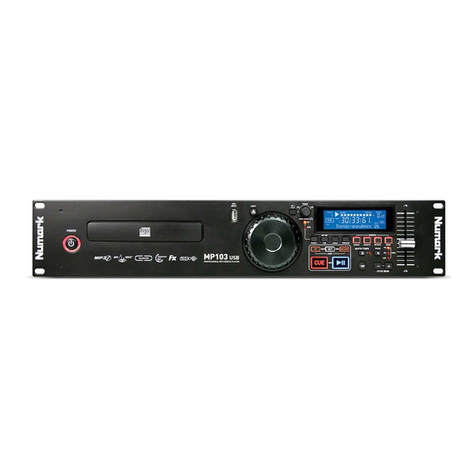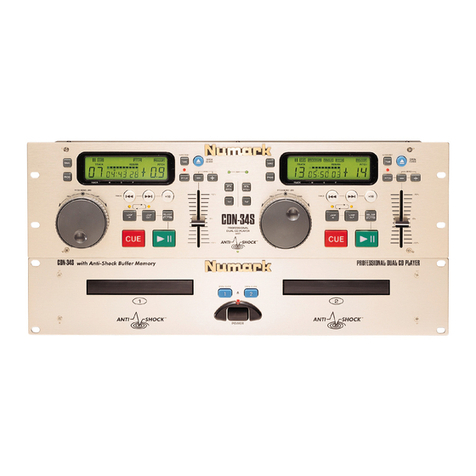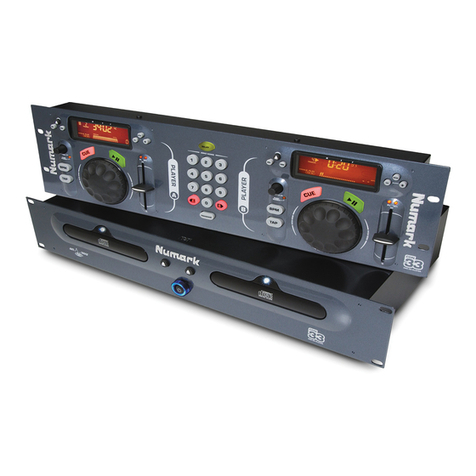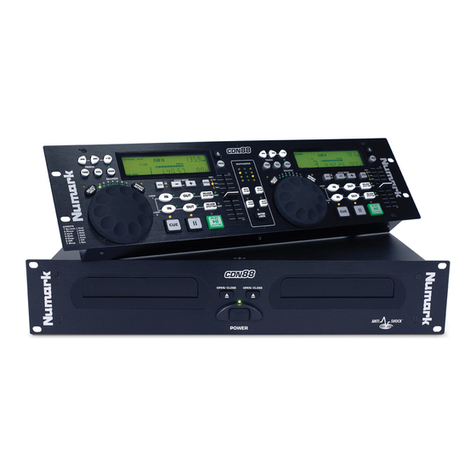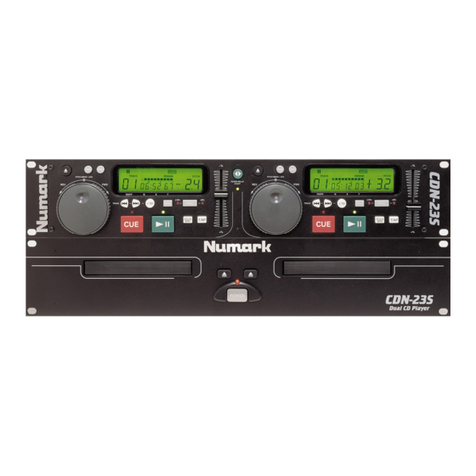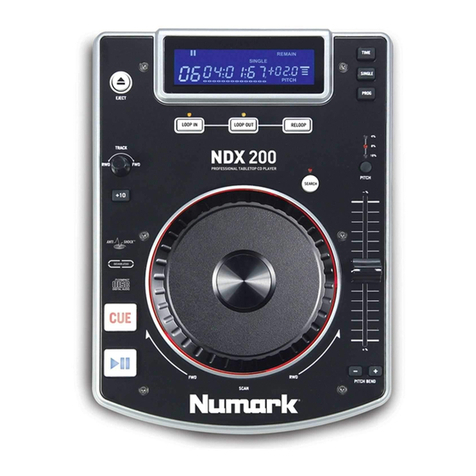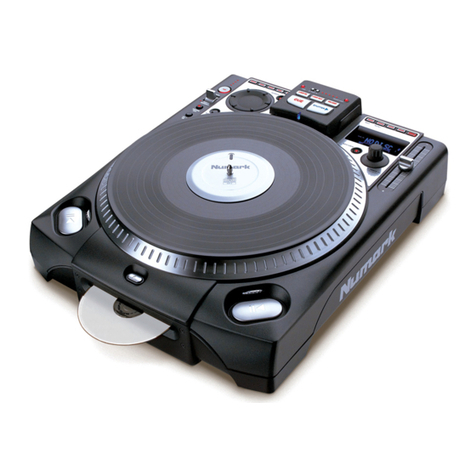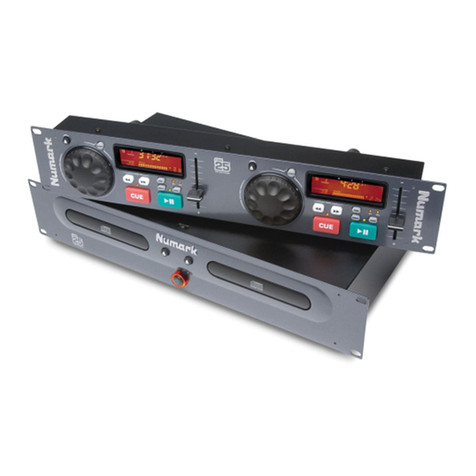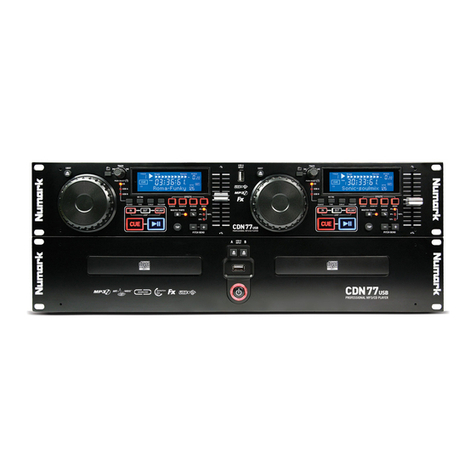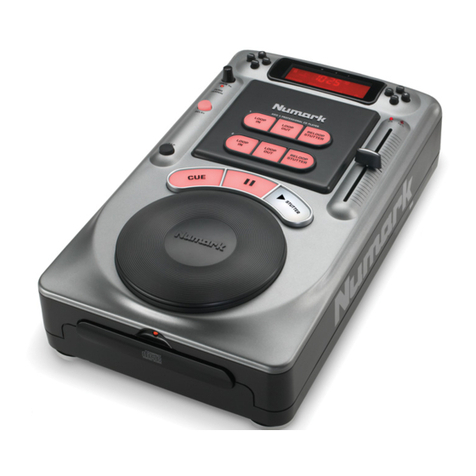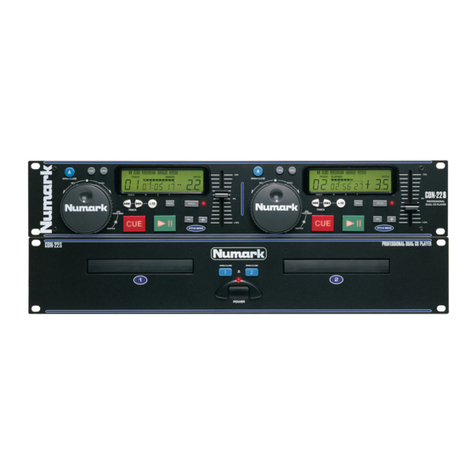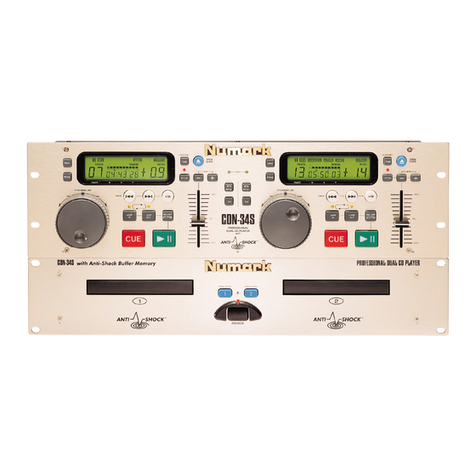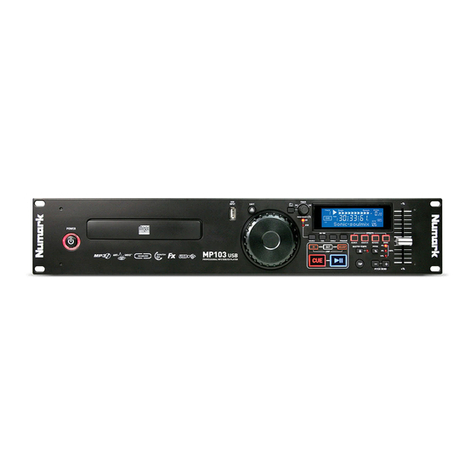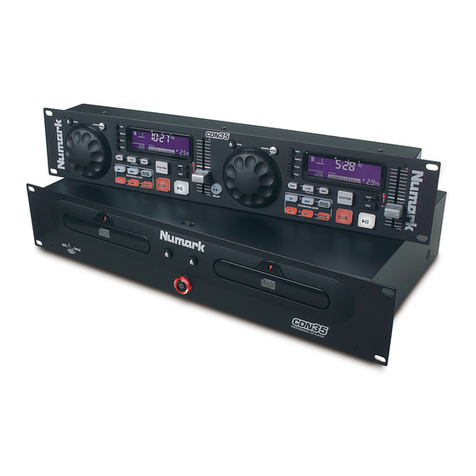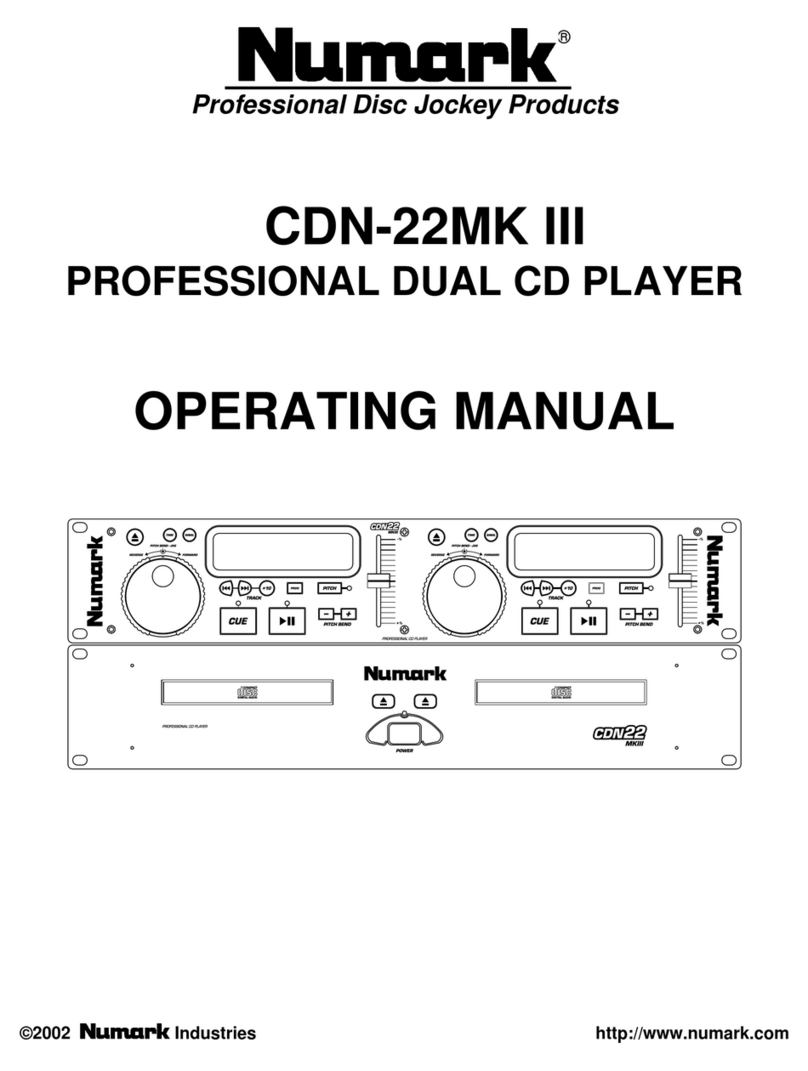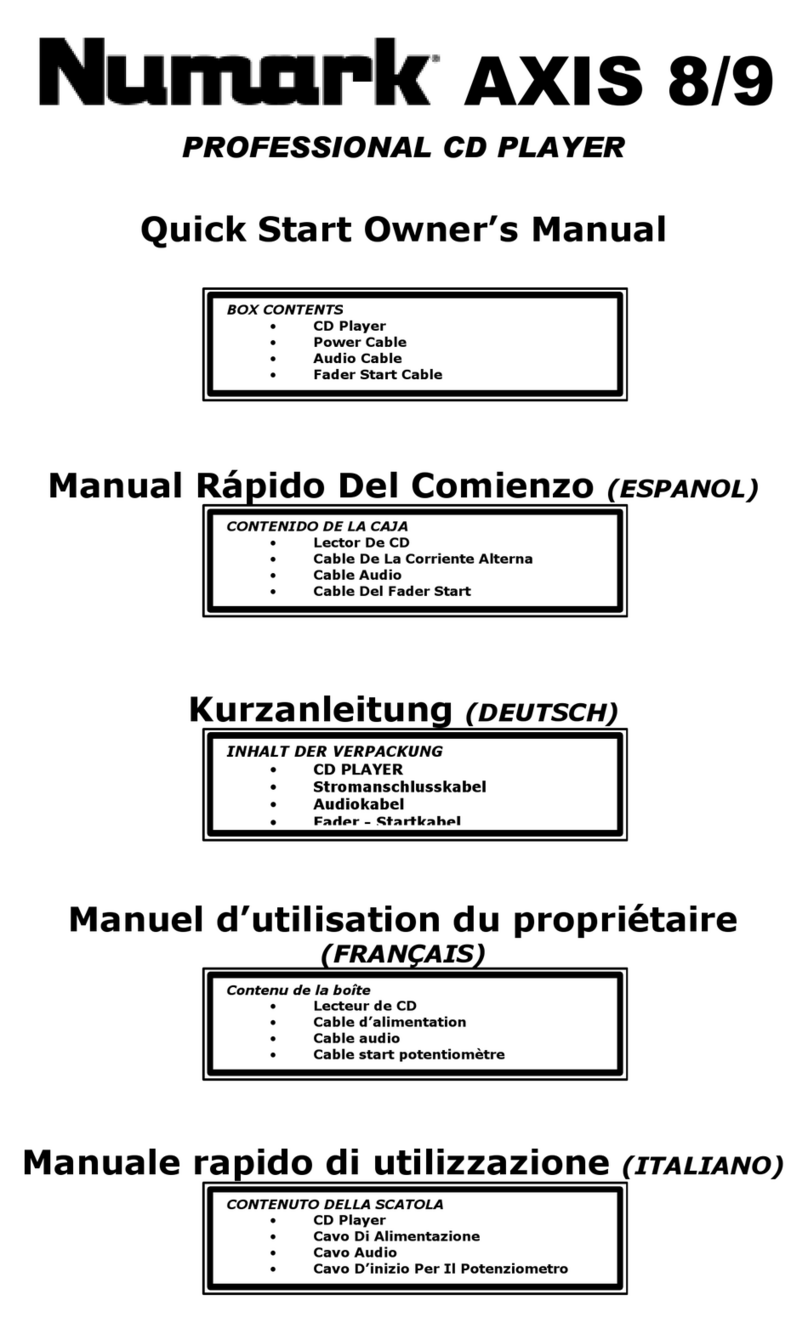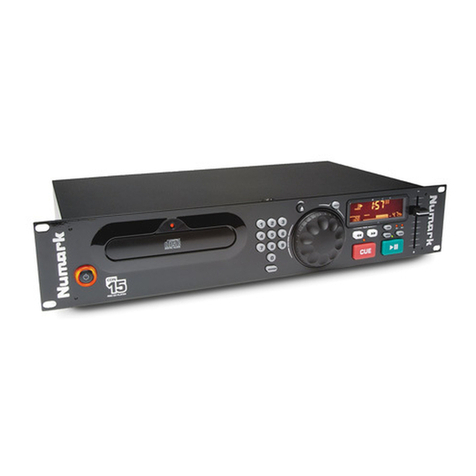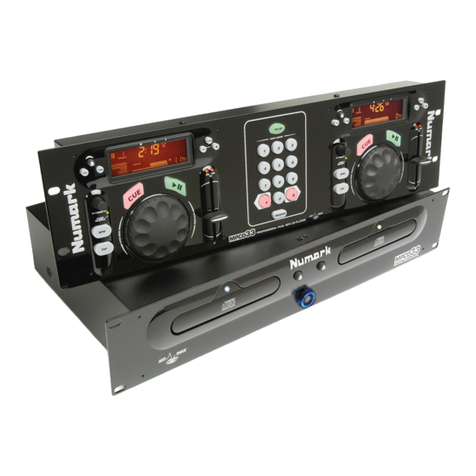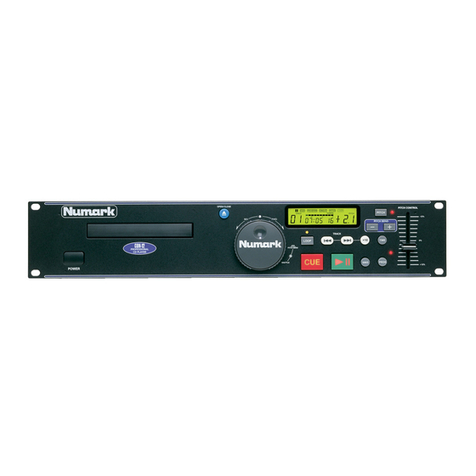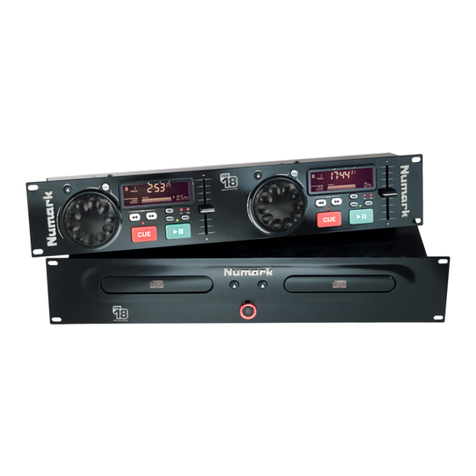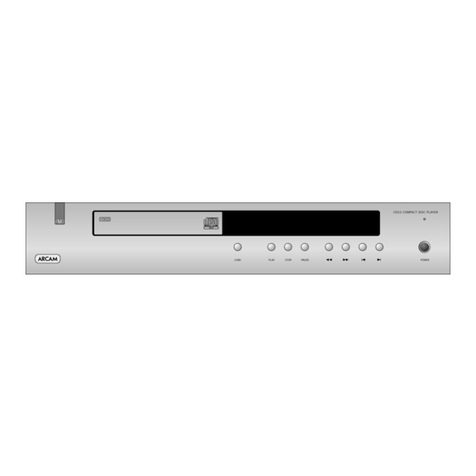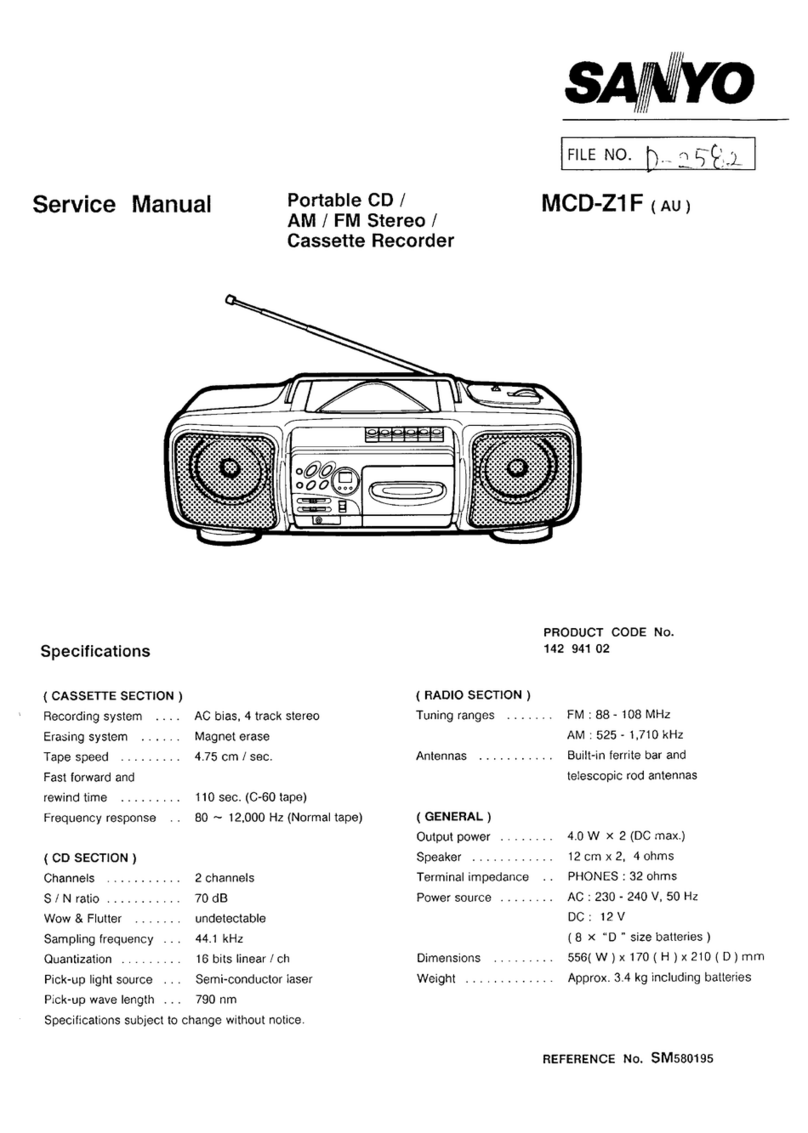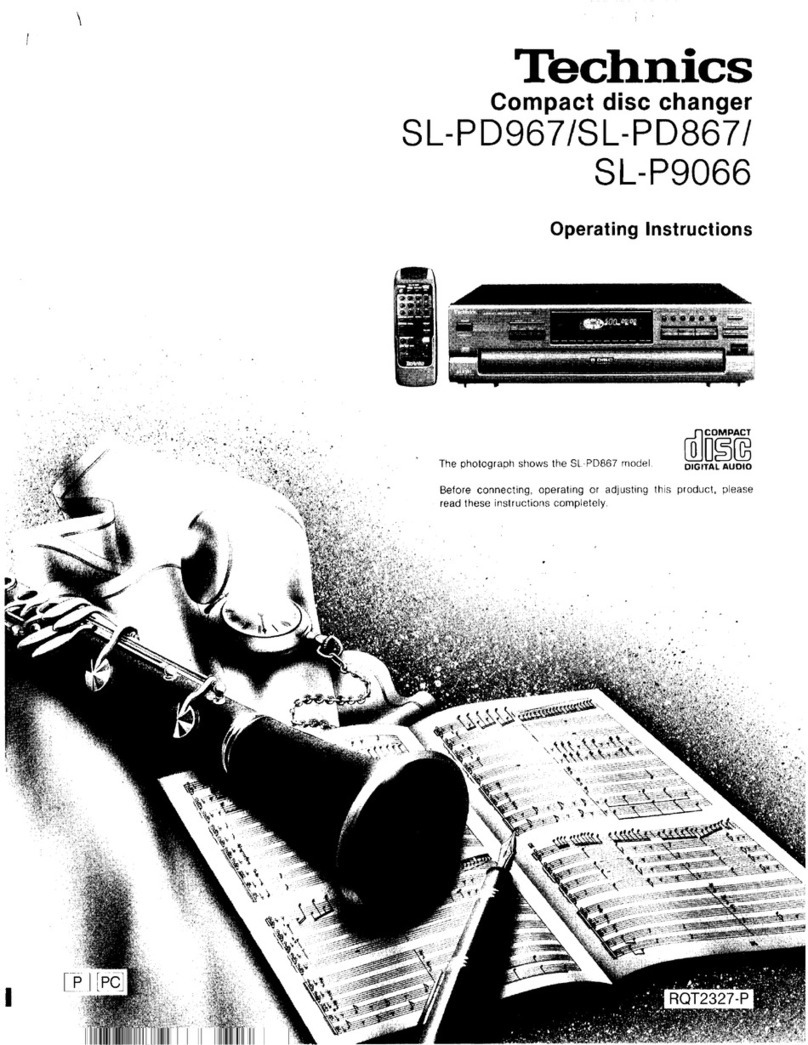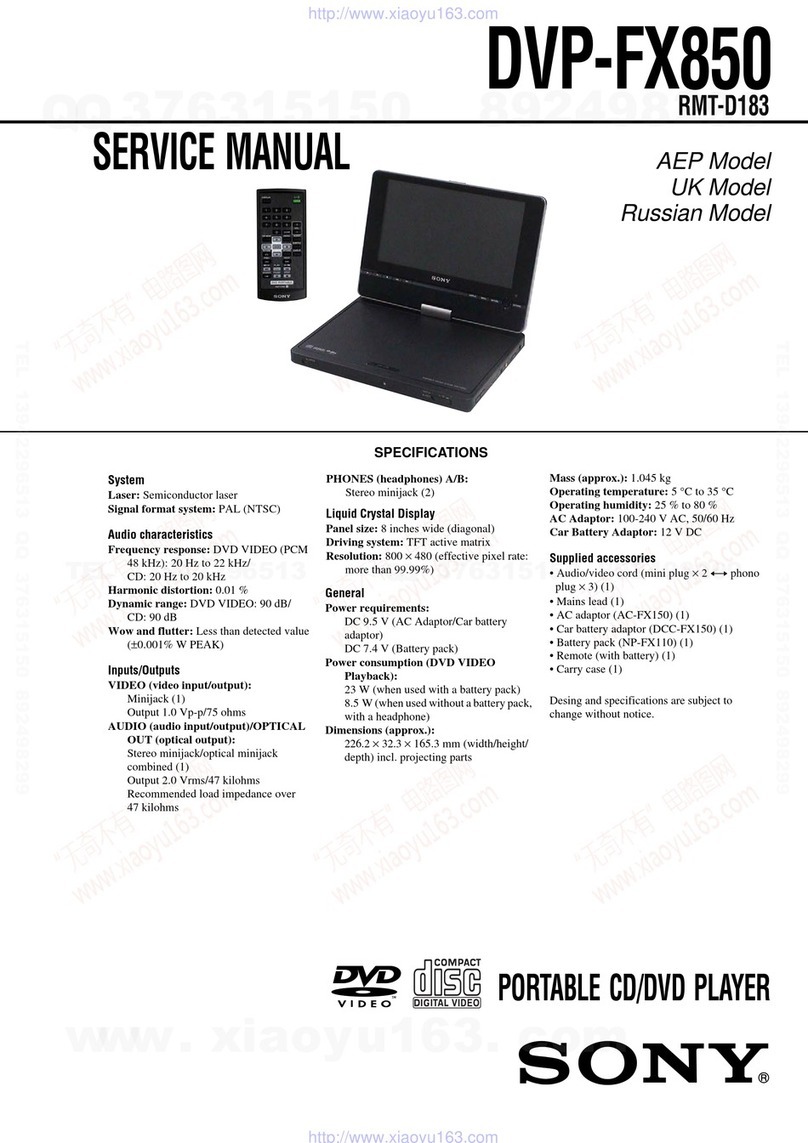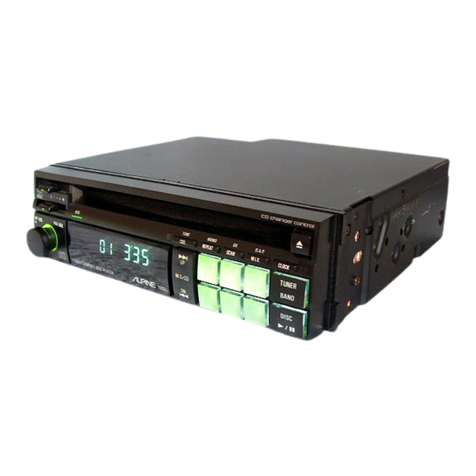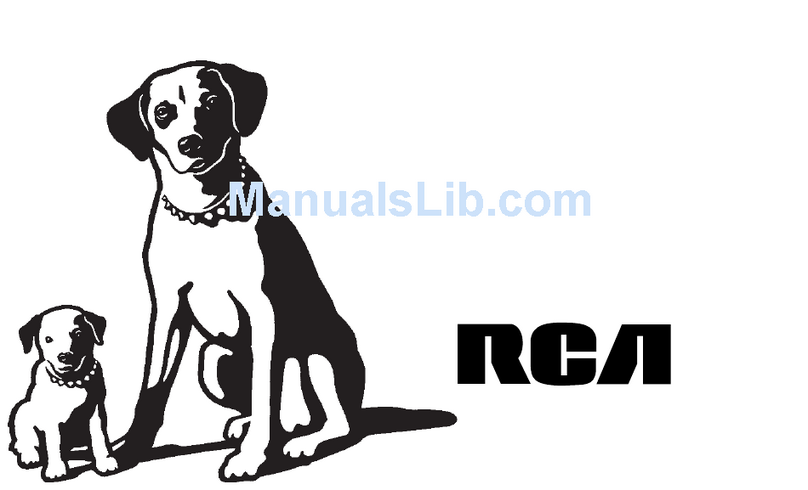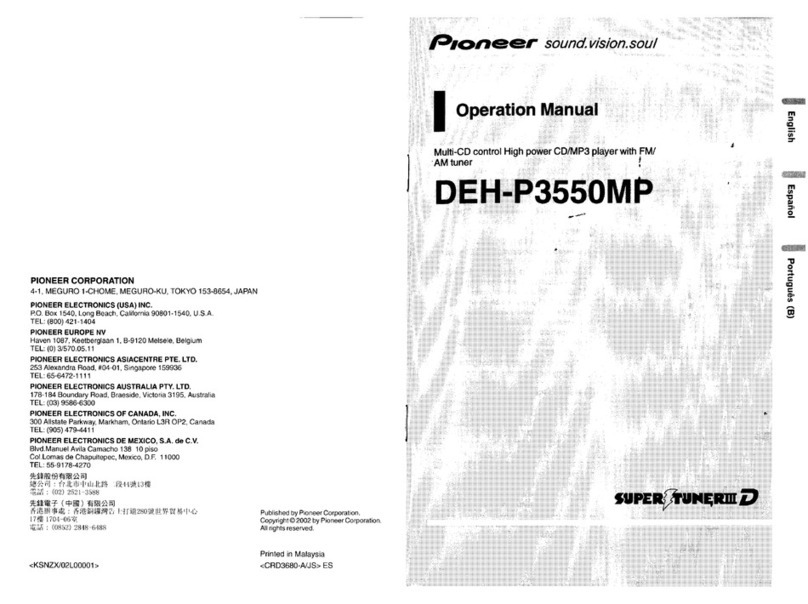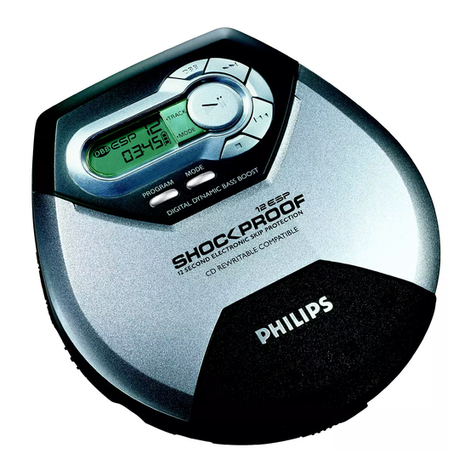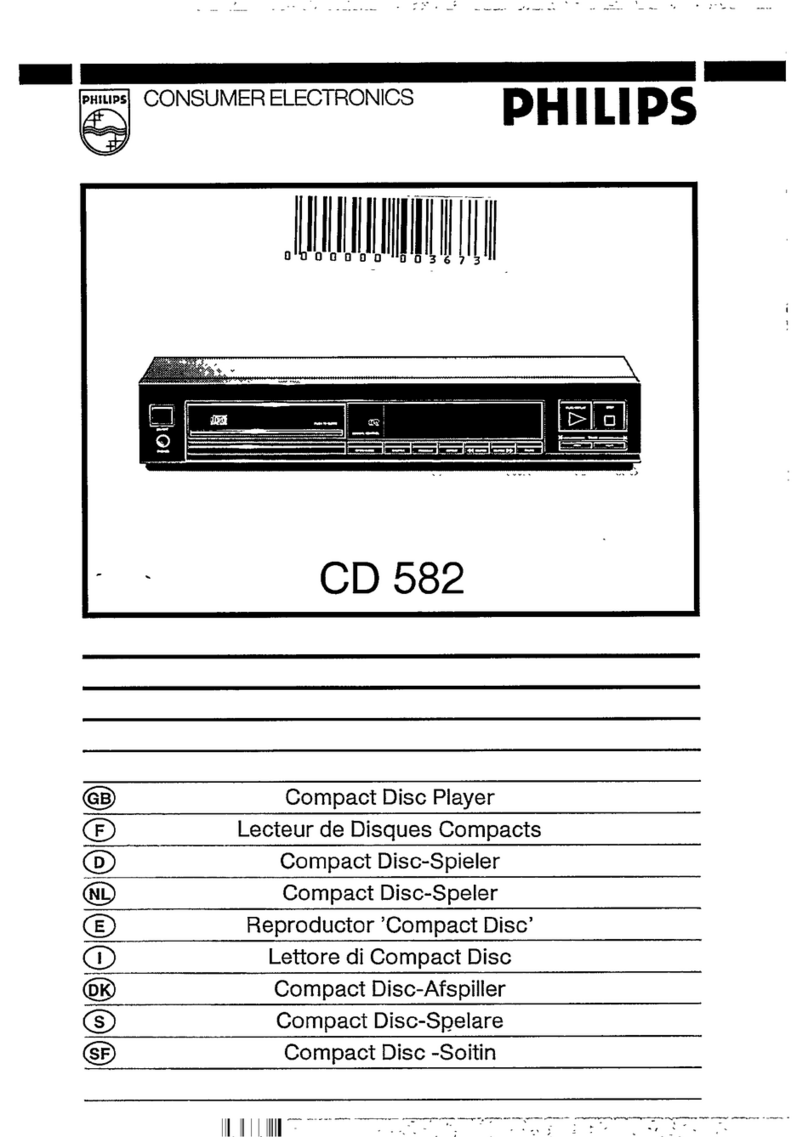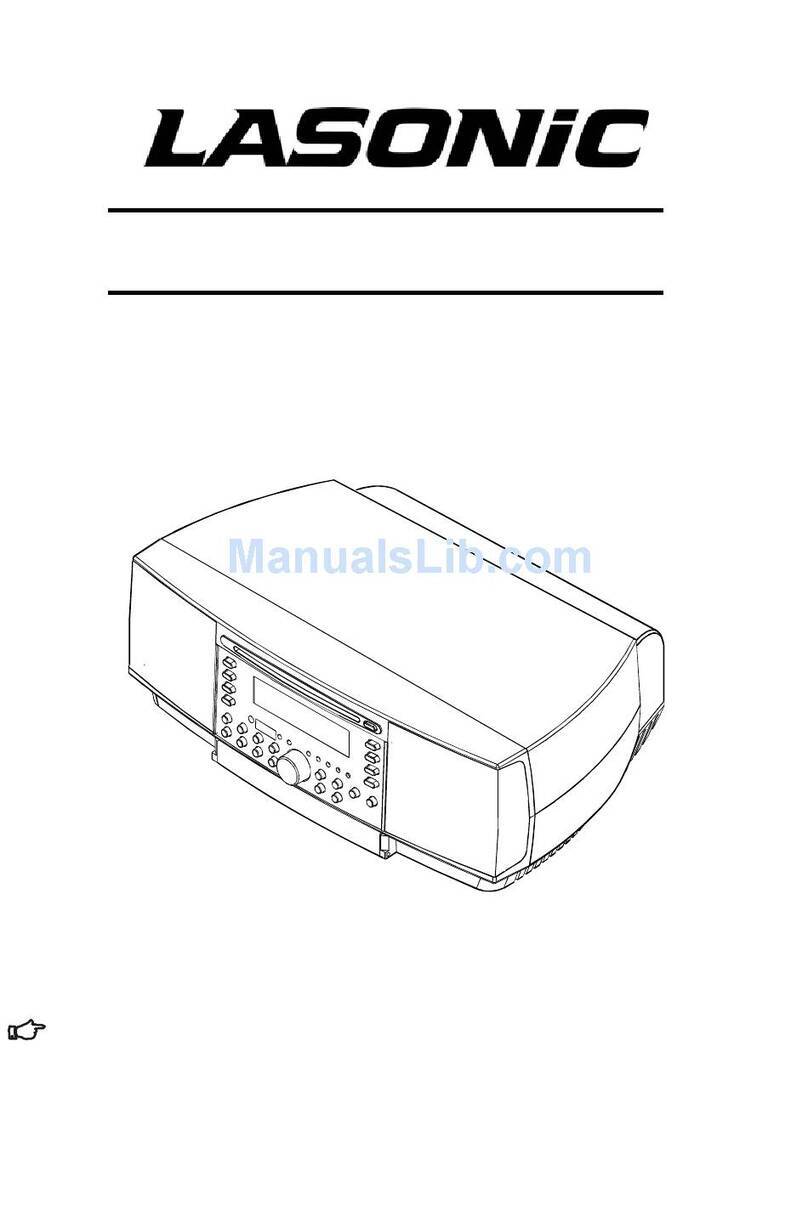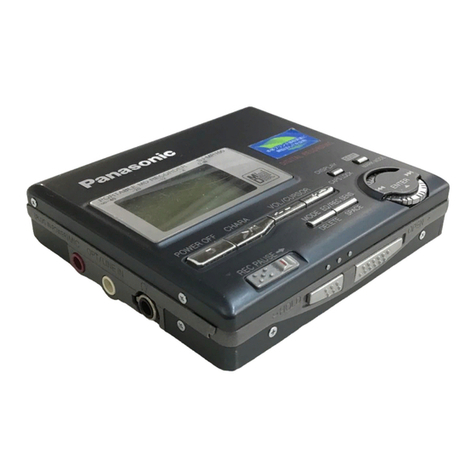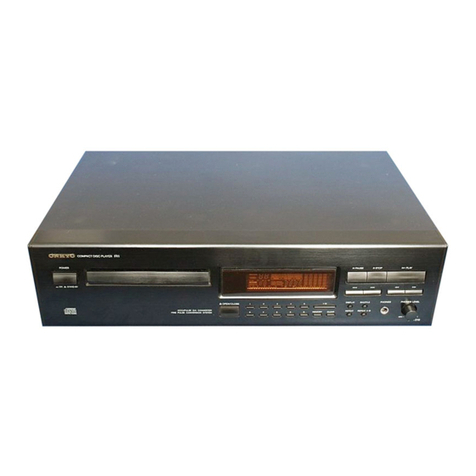9
Características del reproductor de CD
1. ABRIR/CERRAR (Bandeja de disco
Abrir/Cerrar) – Púlselo para introducir o expulsar
el disco. Cada vez que lo pulse se abrirá o cerrará la
bandeja del disco en la unidad. NOTA: La bandeja
no se abrirá a menos que el disco haya sido
detenido. La bandeja se cerrará automáticamente a
los 30 segundos.
2. TIME (Botón de tiempo) – Cambia la visualización
del tiempo entre el tiempo de reproducción
transcurrido y el tiempo restante en la pista y el
tiempo restante en todo el CD.
3. CONT/SING – Al pulsar una o dos veces, hará que
se reproduzcan una o todas las pistas en orden.
4. PANTALLA LCD – Indica todas las funciones del CD
a medida que van teniendo lugar. Estas funciones se
explican en la siguiente sección.
5. TRACK (Botones de pista) – Utilizados para
seleccionar la pista que se va a reproducir.
6. Folder/+10: se utiliza para seleccionar la pista o
“folder” que se va a reproducir.
7. PROGRAMA – Pulse este botón y la unidad se
detendrá y el indicador de programa se iluminará.
Seleccione todas las pistas que desee programar y
pulse el botón de PROGRAMA entre cada selección.
Podrá programar hasta 20 pistas. Pulse PLAY para
activar el programa. Para salir y borrar el programa,
mantenga pulsado el botón de programa durante
más de 2 segundos mientras la unidad está parada,
abra la bandeja del disco, o apague la fuente de
alimentación.
8. PITCH (Botón de Pitch) – Activa el deslizador de
tono (pitch). Para alternar entre ±8% y ±16%,
pulse y mantenga oprimido el botón PITCH. El LED
indica el ajuste del pitch.
9. DESLIZADOR DEL PITCH – El pitch puede variar
hasta un ±16% pulsando el botón del PITCH de
modo que el LED del pitch esté iluminado; tras esto,
deslizando el fader. El pitch no variará si el LED del
pitch está apagado (OFF).
10. SEARCH WHEEL (RUEDA EXTERIOR) – esta
rueda dispone de 3 posiciones de velocidad de
avance y 3 de reverso para buscar dentro de las
canciones. Cuanto más gire la rueda en cualquiera
de las dos direcciones, más rápida será la búsqueda.
11. PITCH BEND/JOG WHEEL (RUEDA INTERIOR) –
Esta rueda de avance lento tiene 2 funciones
dependiendo del modo en el que se encuentre.
a) La rueda de avance lento controlará una
búsqueda de frames lentos cuando el CD no
se esté reproduciendo. Para determinar un
nuevo punto cue de frame, gire la rueda y
pulse PLAY una vez que haya determinado la
posición adecuada. Pulse CUE para volver al
“PUNTO CUE”.
b) Cuando ambos reproductores de CD están
reproduciendo un CD, la función pitch bend
permite el posicionamiento de los beats de
graves para que coincidan una vez que el
pitch de cada disco coincide. Cualquiera de
los reproductores puede “adelantarse” o
“atrasarse” para coincidir con el otro
reproductor. La rueda de avance lento (jog
wheel) cambiará provisionalmente el tono de
la música si la canción se está reproduciendo
girando la rueda en el sentido de las agujas
del reloj para acelerar o en el sentido
contrario para ralentizar. Cambiando el tono
de un disco con respecto al tono del otro
disco, los beats pueden ser igualados.
c) Después de pulsar los botones de pista
anterior o siguiente, puede usar la rueda
para desplazarse rápidamente por las pistas.
Esto es especialmente útil en los CD MP3 con
gran cantidad de pistas.
12. CUE – Al pulsar el botón de CUE durante la
reproducción, se volverá a la posición a la cual
comenzó la reproducción. Si se activa la PAUSA
antes del CUE, esto se convertirá en un punto cue.
Si se presionan alternativamente los botones PLAY y
CUE, el CD será reproducido desde la misma
posición cuantas veces se desee. El LED del CUE se
iluminará desde el momento en que se pulse el
botón de CUE hasta que el CD haya sido reiniciado a
la posición a la que se comenzó la reproducción.
Una iluminación continua de este LED indica que el
CUE está listo.
13. START/PAUSE (Botón de reproducción/pausa)
–Cada vez que se pulsa el botón de
reproducción/pausa esto hace que se cambie de
reproducción a pausa o de pausa a reproducción.
14. LOOP IN: Fija el tartamudeo y las puntas de
entrada del bucle.
15. LOOP OUT: Fijar las puntas de la salida del bucle y
deja salir del bucle.
16. RELOOP/STUTTER: Utilizado para una canción
repetada (tartamudeo) del punto de entrada del
bucle, repetando un comienzo previamente fijado, y
hot start.
